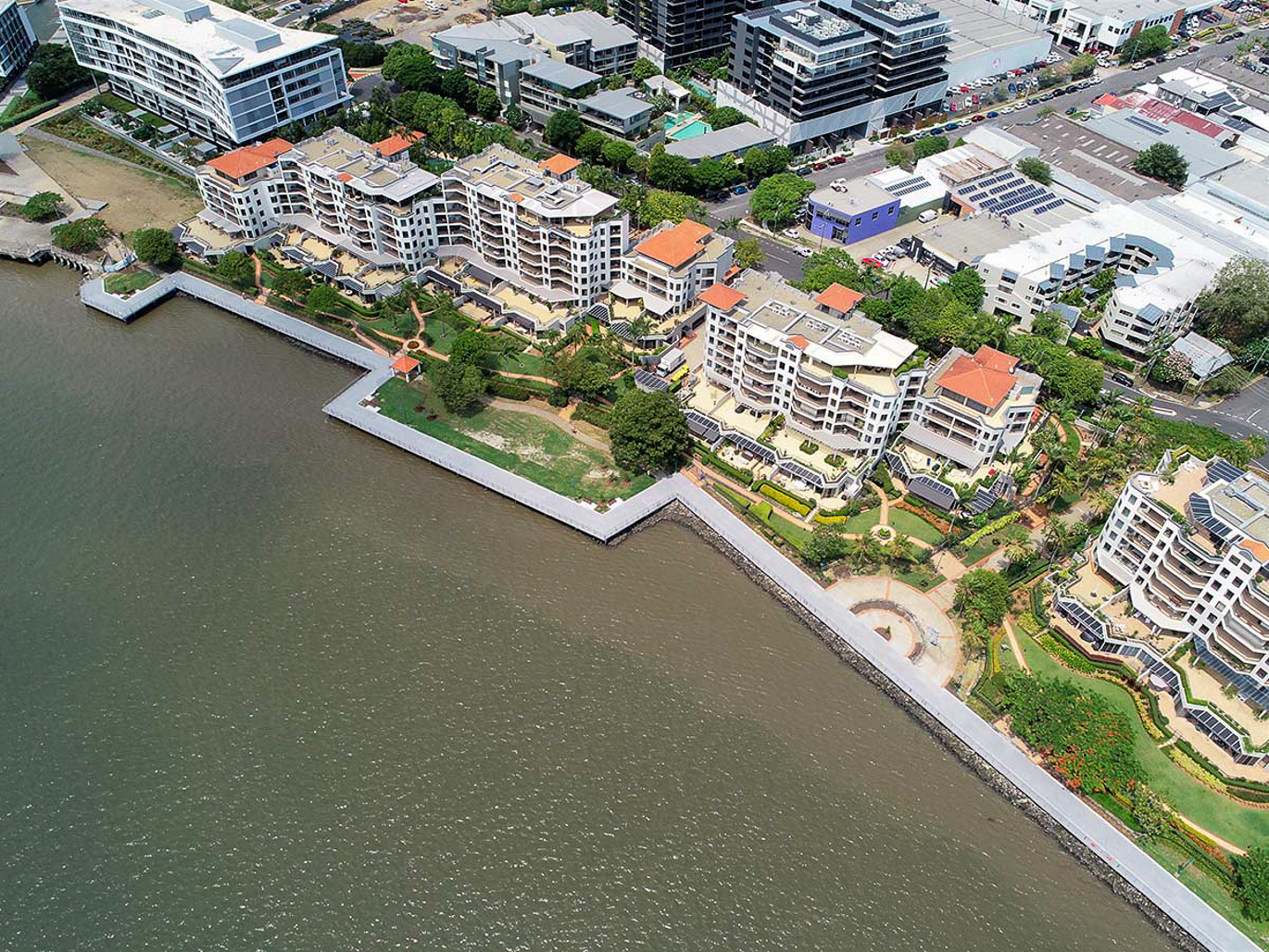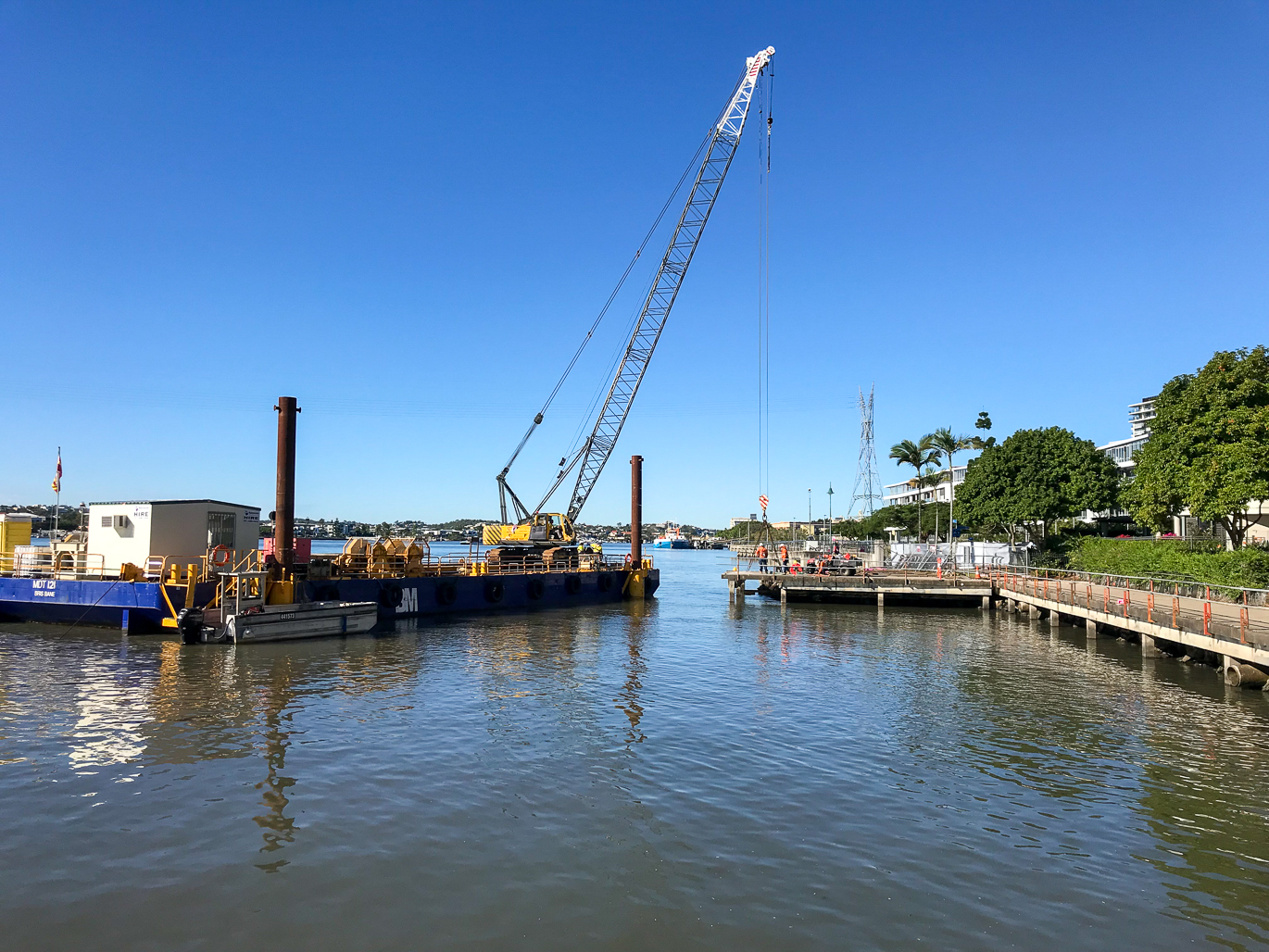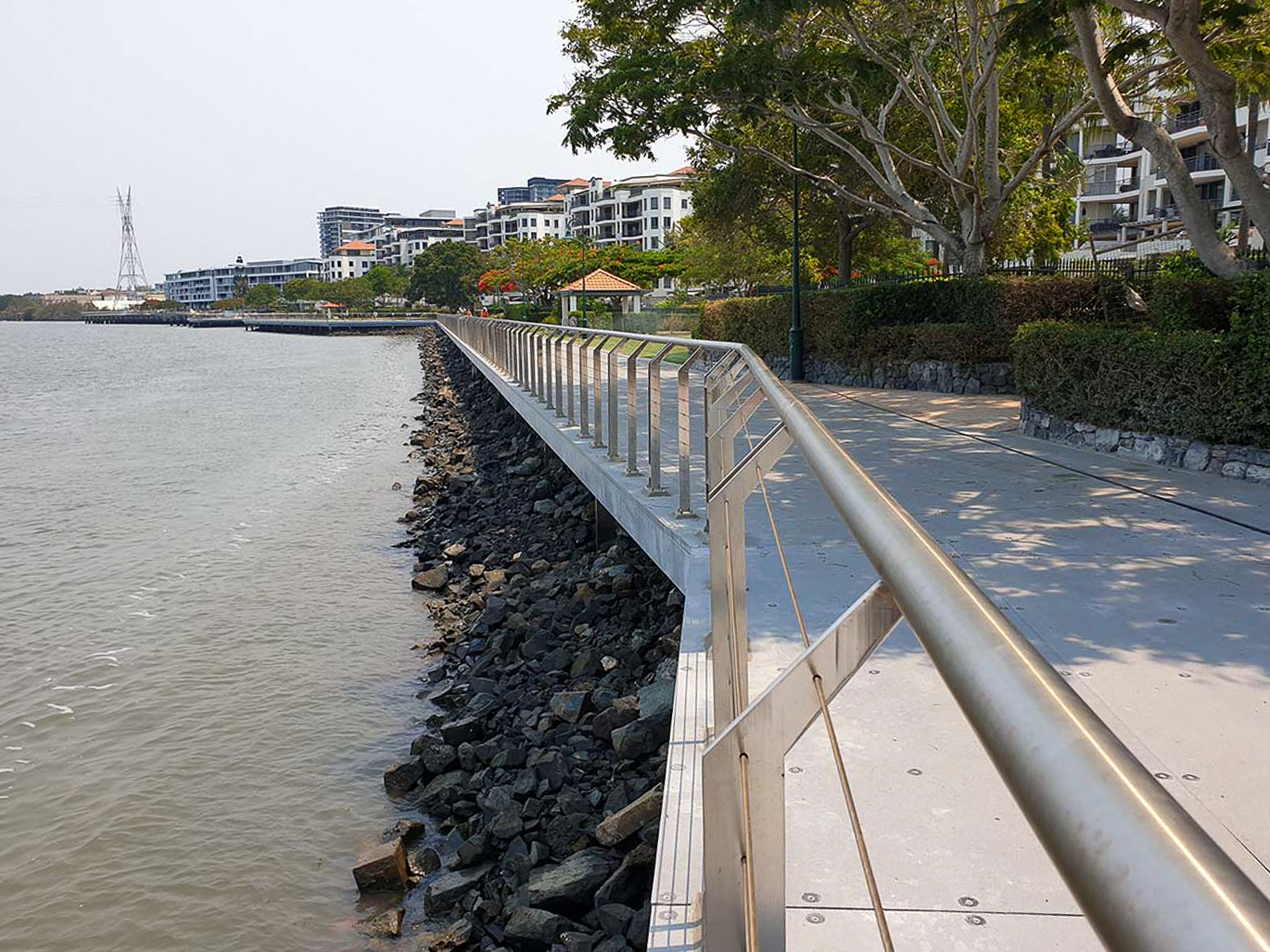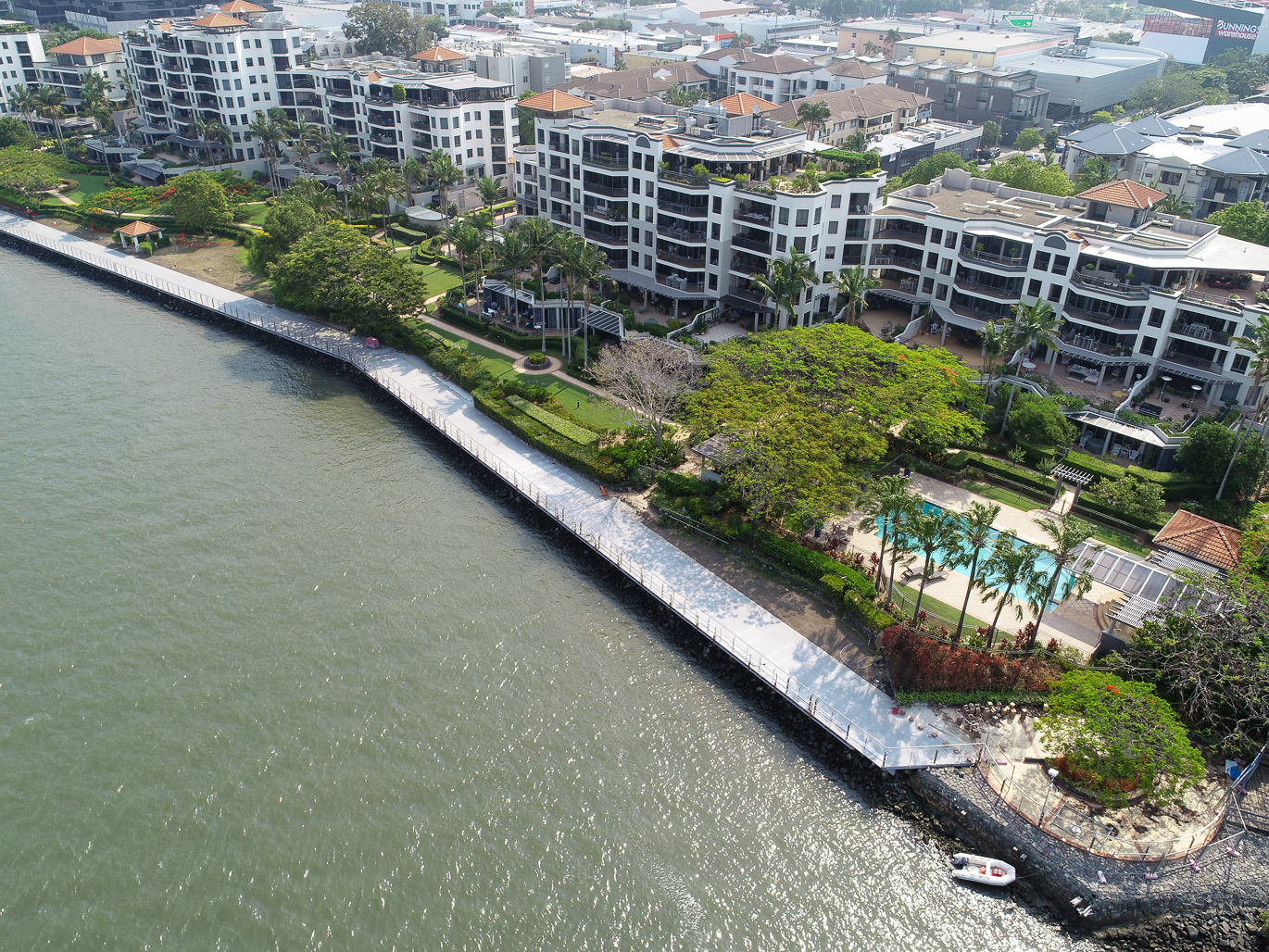surveying technology used
supply barge used
year design life
remediated structure
Abergeldie and Brisbane City Council worked collaboratively to deliver a complex, above-water infrastructure project. The Mariners Reach Riverwalk, a 440m superstructure built in 1907, required remediation to repair its degraded structure. Abergeldie successfully completed the partial demolition, reconstruction, and structural remediation of the boardwalk and pathway at Newstead along the Brisbane River, ensuring continued safe use.
Scope of Works
The works included:
- Demolition and disposal of the existing reinforced concrete (RC) desk structure, precast deck slabs, and headstocks.
- Condition assessment and repairs to the remaining concrete elements, including RC piles, abutments, and headstocks not demolished.
- Condition assessment and repairs to the existing timber structural elements.
- Repairs and/or removal/re-erection of the southern (upstream) section of the Riverwalk’s timber components.
- Replacement of corroded steel bolts with equivalent stainless-steel fasteners.
- Construction of a rock gabion cut-off wall along the landward side of the Riverwalk with river revetment stabilisation.
- Supply and install a fibre-reinforced plastic modular desk structure.
- Removal, storage and re-installation of balustrades, light poles, drinking fountains, electrical and water services, seating, plaques, and flagpoles.
- Landscaping.
Adapting the methodology
Mobilisation to site was delayed, with Council reconsidering the construction methodology, noise controls and temporary traffic management arrangements to address concerns of potential disturbance of amenities to residents in the vicinity of the works.
Once site possession was granted, our team completed a detailed survey of the site as a 3D scan. This process picked up the precise positions of the existing piles to inform specifications and dimensions for procurement of the FRP materials for the headstocks, joists, and decking. The 3D survey also captured the positions of the existing handrail and stanchions, which were superimposed onto the new design to document the precise positions of joists under each stanchion. This enabled the headstocks to be marked up accurately when they were set out on site.
Adding to the complexity was the location of the works. With the works occurring over/near water, strict safety and environmental controls were put in place.
Revitalised riverwalk for community use
Constructed in 1997, the former Riverwalk featured a timber deck with ground-level concrete paving, supported by timber and concrete piles with concrete headstocks. Continuous use over the years diminished its structural capacity, rendering it unsafe for public use.
The completed works strengthened and improved the structural integrity, revitalising the riverwalk for daily pedestrians, cyclists, and tourists.







